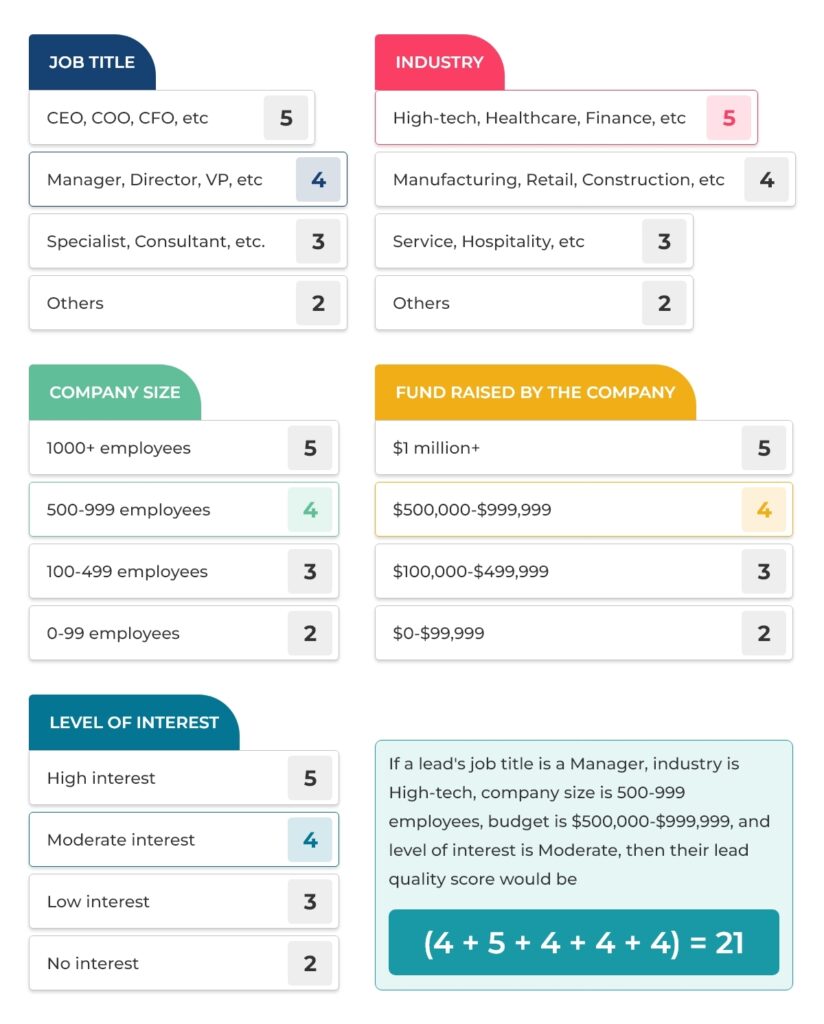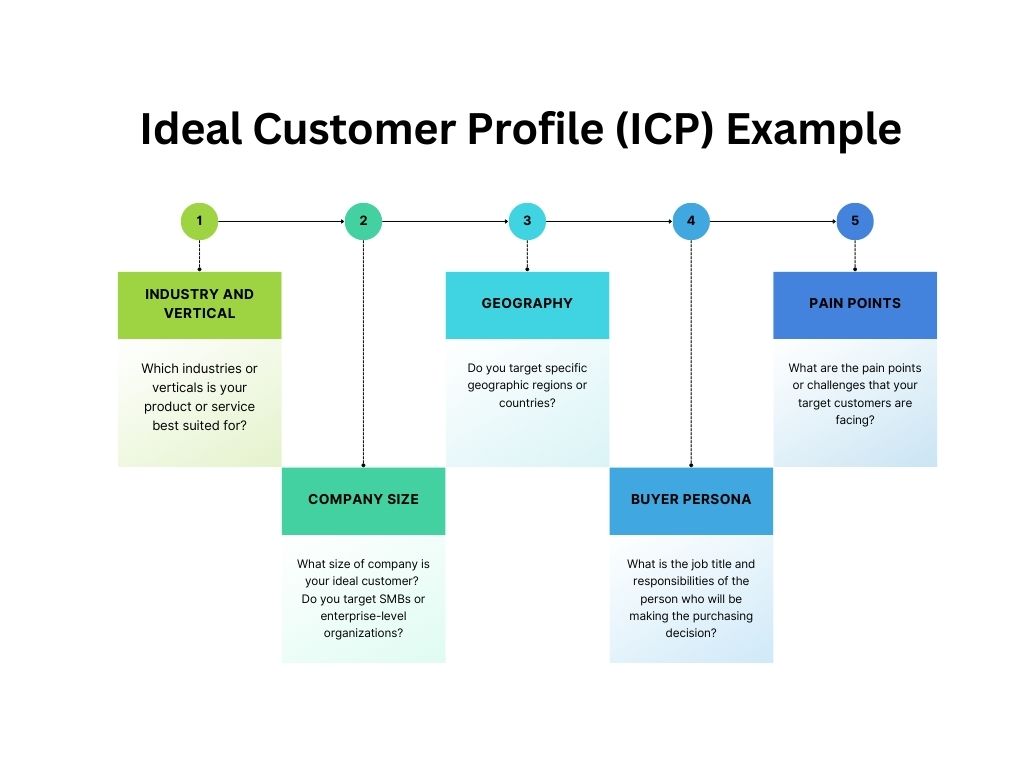
Sales Development Representatives (SDRs) are the unsung heroes of the B2B SaaS industry. Nod yes, if it’s true. In the world of SDRs, there are two main types: inbound and outbound. An Outbound SDR is a more traditional approach, where they proactively reach out to potential customers.
On the other hand, inbound SDRs focus on generating leads through content marketing, SEO, and other organic methods.
But which approach is better? In this article, we’ll explore the differences between inbound and outbound SDRs and discuss the benefits, metrics, and daily activities of both SDRs.
Let’s get started.
Who is an inbound SDR?
Inbound SDRs pursue warm marketing leads.
They work closely with the marketing team to leverage the content that has been created to engage with potential prospects and guide them through the sales funnel.
These potential prospects are considered inbound when –
- The SDRs download marketing material like an e-book from your website or blog page
- Inbound SDRs interact with you via the website chat
- They register for a webinar you are organizing
- They book a demo with a salesperson through a form on your website
These prospects become qualified leads when an inbound SDR determines which leads are the most promising and they make sure that the right leads are being targeted.
Once the prospect engages with you in any one of the ways above, this is the cue for an inbound SDR to make a move.
They can use a variety of tactics to continue the conversation and guide the prospect toward a sale.
These tactics include personalized email outreach, social media engagement, and other forms of communication.
Here’s a typical scenario of a successful inbound sale:
A prospect finds you on Google, visits your blog, and is impressed by your offerings. So they download the ebook from that blog page.
Now an inbound SDR will reach out to the prospect and try to start a conversation. Depending on the sales cycle, it might take anywhere from one month to a year for an inbound SDR to convert this lead to a customer.
Benefits of an inbound SDR
One of the main benefits of having an inbound SDR is that it leverages the interest and intent of potential customers who have already expressed an interest in your product. This makes it easier to engage and build relationships with them.
Since you already have the right people in hand, you can save time and resources by focusing on the most promising opportunities.
Inbound SDR Daily Activities
1. Prospecting sales leads
An inbound SDR uses various tools like website visitor identification software, social media, inbound lead forms, etc. to find potential leads who have already shown interest in the product via an engagement on your website.
Once they have identified potential customers, they reach out to them to start a conversation and gather more information about their needs.
2. Qualifying inbound leads
After identifying potential customers, inbound SDR reps qualify them by assessing their level of interest, budget, authority, and timeline.
They use a variety of questions and techniques to determine whether a potential customer is an ideal fit for the business. In addition, they determine whether they are ready to move forward in the sales process.
3. Lead scoring
Lead scoring is the process of assigning a score to potential customers based on their level of engagement and interest in a business’s products or services.
Inbound SDRs use lead scoring to prioritize leads and focus their efforts on the most promising opportunities.

4. Lead nurturing
Lead nurturing involves building relationships with potential customers over time by providing them with relevant information and resources.
Inbound SDR reps use various techniques to nurture leads, such as email marketing, social media engagement, and personalized outreach.
5. Set appointments
Once a potential customer has been qualified and nurtured, the inbound SDR rep sets an appointment for a sales call or demo.
They work with the sales team to ensure that the appointment is scheduled at a convenient time for both parties.
On the whole, the ultimate goal is to facilitate an inbound lead’s progress through the sales funnel, culminating in their conversion.
Inbound SDR metrics
It’s always worthwhile to track the right metrics for an inbound SDR to identify areas of improvement and the effectiveness of the sales process.
Tracking the following metrics allows the inbound SDR to gain insight into their process and make data-driven decisions.
1. Response rate
Response rate is the percentage of prospects who respond to an inbound SDR’s outreach attempts.
Formula:
Response rate = (Number of responses / Number of total outreach attempts) x 100%
Example:
If an inbound SDR makes 100 outreach attempts and receives 20 responses, the response rate would be –
Response rate = (20 / 100) x 100% = 20%
2. Lead Conversion Rate
This metric tracks the percentage of qualified leads that are converted into customers.
Formula:
Lead conversion rate = (Number of customers / Number of qualified leads) x 100%
Example:
If an inbound SDR qualifies 50 leads and 10 of them become customers, the lead conversion rate would be:
Lead conversion rate = (10 / 50) x 100% = 20%
3. Time to response
This tracks the time it takes for an inbound SDR to respond to a prospect’s inquiry. This determines how fast an inbound SDR responds & engages with the new leads.
Formula:
Time to response = (Time of response – Time of inquiry) in minutes or hours
Example:
If a prospect submits a contact form on your website at 9:00 AM and the inbound SDR responds at 9:30 AM, the ‘time to response’ would be 30 minutes.
4. Sales pipeline velocity
Sales pipeline velocity determines the speed at which leads move through the sales pipeline.
Formula:
Sales pipeline velocity = (Number of opportunities x Average deal value) / Sales cycle length
Example:
If a business has 100 opportunities in its sales pipeline, an average deal value of $10,000, and a sales cycle length of 30 days, the sales pipeline velocity would be:
Sales pipeline velocity = (100 x $10,000) / 30 = $333,333 per month
| Points of differences | Outbound SDRs | Inbound SDRs |
| Role | They proactively reach out to potential customers through cold calling, email outreach, etc. | They pursue warm marketing leads |
| Benefits | They have the potential to target specific individuals or companies which can lead to higher-quality leads and a higher conversion rate | They leverage the interest and intent of potential customers who have already expressed an interest in your product |
| Daily activities | Targeted prospecting, Multi-channel outreach with personalization, Follow-up, | Prospecting sales leads, Qualifying inbound leads, Lead scoring, Lead nurturing, etc. |
| Metrics | Productivity Metrics and Performance metrics. | Response rate, Lead Conversion Rate, Time to response, Sales pipeline velocity, etc. |
Who is an Outbound SDR?
Outbound SDR is a sales development strategy that involves proactively reaching out to potential customers through cold calling, email outreach, and other forms of communication.
Unlike inbound SDR, who relies on organic methods to attract potential customers, outbound SDR takes a more targeted approach, with sales reps reaching out to specific individuals or companies that may be a good fit for their product.
While outbound SDR can be a more challenging approach than inbound SDR, it can be highly effective when executed properly.
Suggested Read: Guide to Framing the best outbound sales process
Benefits of Outbound SDR
An outbound SDR has the potential to target specific individuals or companies which can lead to higher-quality leads and a higher conversion rate.
Outbound SDR also allows businesses to take a more proactive approach to sales development, rather than waiting for potential customers to come to them.
This can be particularly effective in industries or markets where competition is high.
Outbound SDR Daily Activities
1. Targeted Prospecting
Outbound SDR’s major focus should be on prospecting. No matter how skilled you are at selling, if you are not targeting the right people, you can’t close a deal who has no need for your product.
An outbound SDR must narrow down the prospects by developing well-researched Ideal Customer Profiles (ICPs).
Here is an example of an ICP –

2. Multi-channel outreach with personalization
Sending relevant and personalized messages is crucial for an outbound SDR. This can be sent via any channel – email, call, or other social media platforms.
When it comes to choosing a channel to communicate, an outbound SDR should remember that it’s not about their convenience. It should be all about the prospect.
3. Follow-up
Follow-up is critical to making outbound SDR effective. Sales reps should be persistent in their outreach, but also respectful of potential customers’ time and preferences.
Outbound SDR metrics
Outbound SDRs typically have a colder approach and face prospects with low brand awareness, resulting in naturally lower conversion rates. This implies that a higher volume of activity is required.
This is why an outbound SDR’s metrics majorly revolve around productivity, performance, and customers.
Here are some of the metrics that outbound SDR should track –
1. Productivity metrics
The metrics in this category involve the daily activities performed. These include –
- Emails sent = Total number of emails sent
- Opens = Total number of opens
- Number of clicks = Total number of clicks
- Number of replies = Total number of replies received
- Number of positive replies = Number of positive replies
- Qualified meetings = Total number of qualified meetings booked
- Calls = Total number of calls made
- Opportunities created = number of potential sales leads in the pipeline
- Proposals sent = number of proposals or quotes sent to potential customers
- Deals won = number of deals won
2. Performance metrics
The performance metrics determine the overall success of an outbound SDR in achieving its goals. These metrics are all about pipeline management, deal closing, negotiations, etc.
- Sales conversion rate – measures the percentage of leads that actually become customers.
- Average deal size – a measure of the average revenue generated from each successful sale.
- Win-loss ratio – measures the success rate of a sales team in terms of the number of deals won compared to the number of deals lost.
- Sales cycle length – average time took for the outbound SDR to close the deal
Check out how an outbound SDR calculates and tracks these metrics [Free Google sheet templates included]
Should you be an inbound or outbound SDR?
If you enjoy building relationships and guiding leads through the sales process, inbound SDR may be a good fit for you.
On the other hand, if you are comfortable with cold emailing, cold calling, and reaching out to new and unknown prospects, outbound SDR may be a better fit.
It’s also worth noting that different industries and companies may have different preferences for inbound versus outbound SDRs.
Researching the culture and sales strategies of the companies you are interested in can help you determine which role would be a better fit for you. Ultimately, it’s important to choose a role that aligns with your strengths and interests to set yourself up for success.
But should you be a hybrid SDR who does both inbound and outbound?
Honestly, you cannot be a hybrid SDR, especially if you are new to B2B SaaS sales.
Here’s why –
- Splitting focus: Juggling both inbound and outbound responsibilities can be challenging and can make it difficult to give either area the necessary attention it deserves.
- Different skill sets: Inbound and outbound sales require different skills and mindsets, and trying to do both can make it challenging to excel in either one. Chances are high that you might end up doing nothing productive on either side.
- Burnout: The combination of high volumes of outbound work and the need for constant and immediate follow-up with inbound leads can lead to burnout, making it harder to maintain motivation and enthusiasm for the role.
- Time management: It can be difficult to balance inbound and outbound tasks and manage time effectively. Without careful planning and organization, it’s easy to get overwhelmed and fall behind on tasks.
If you’d really like to pursue a hybrid SDR role, then you should have a clear plan for managing your time and tasks effectively to prevent burnout and ensure success on both sides.
Final thoughts
While inbound and outbound SDRs have different approaches, they both contribute to the success of B2B SaaS sales teams in different ways.
Each approach has its own unique advantages and challenges, but the most successful B2B SaaS sales teams often employ both inbound and outbound strategies to create a comprehensive sales pipeline.
Furthermore, while being a hybrid SDR who does both inbound and outbound can offer a range of benefits, it’s important to carefully consider your strengths, interests, and capacity before taking on this type of role.
Ultimately, both SDRs play a critical role in driving growth and revenue.